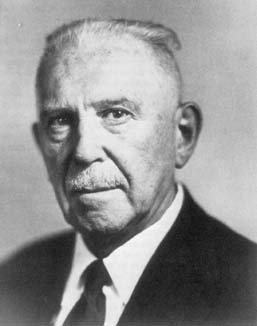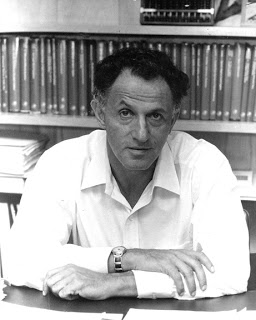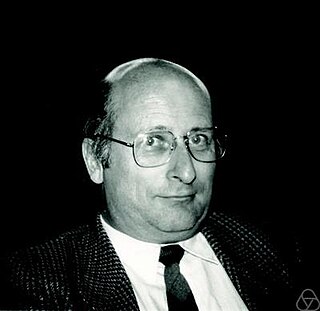Related Research Articles
Control theory is a field of control engineering and applied mathematics that deals with the control of dynamical systems in engineered processes and machines. The objective is to develop a model or algorithm governing the application of system inputs to drive the system to a desired state, while minimizing any delay, overshoot, or steady-state error and ensuring a level of control stability; often with the aim to achieve a degree of optimality.

In mathematics, a dynamical system is a system in which a function describes the time dependence of a point in an ambient space, such as in a parametric curve. Examples include the mathematical models that describe the swinging of a clock pendulum, the flow of water in a pipe, the random motion of particles in the air, and the number of fish each springtime in a lake. The most general definition unifies several concepts in mathematics such as ordinary differential equations and ergodic theory by allowing different choices of the space and how time is measured. Time can be measured by integers, by real or complex numbers or can be a more general algebraic object, losing the memory of its physical origin, and the space may be a manifold or simply a set, without the need of a smooth space-time structure defined on it.
In mathematics and science, a nonlinear system is a system in which the change of the output is not proportional to the change of the input. Nonlinear problems are of interest to engineers, biologists, physicists, mathematicians, and many other scientists since most systems are inherently nonlinear in nature. Nonlinear dynamical systems, describing changes in variables over time, may appear chaotic, unpredictable, or counterintuitive, contrasting with much simpler linear systems.
In the theory of ordinary differential equations (ODEs), Lyapunov functions, named after Aleksandr Lyapunov, are scalar functions that may be used to prove the stability of an equilibrium of an ODE. Lyapunov functions are important to stability theory of dynamical systems and control theory. A similar concept appears in the theory of general state-space Markov chains usually under the name Foster–Lyapunov functions.
Various types of stability may be discussed for the solutions of differential equations or difference equations describing dynamical systems. The most important type is that concerning the stability of solutions near to a point of equilibrium. This may be discussed by the theory of Aleksandr Lyapunov. In simple terms, if the solutions that start out near an equilibrium point stay near forever, then is Lyapunov stable. More strongly, if is Lyapunov stable and all solutions that start out near converge to , then is said to be asymptotically stable. The notion of exponential stability guarantees a minimal rate of decay, i.e., an estimate of how quickly the solutions converge. The idea of Lyapunov stability can be extended to infinite-dimensional manifolds, where it is known as structural stability, which concerns the behavior of different but "nearby" solutions to differential equations. Input-to-state stability (ISS) applies Lyapunov notions to systems with inputs.

Solomon Lefschetz was a Russian-born American mathematician who did fundamental work on algebraic topology, its applications to algebraic geometry, and the theory of non-linear ordinary differential equations.

Richard Ernest Bellman was an American applied mathematician, who introduced dynamic programming in 1953, and made important contributions in other fields of mathematics, such as biomathematics. He founded the leading biomathematical journal Mathematical Biosciences, as well as the Journal of Mathematical Analysis and Applications.
LaSalle's invariance principle is a criterion for the asymptotic stability of an autonomous dynamical system.
The Bihari–LaSalle inequality was proved by the American mathematician Joseph P. LaSalle (1916–1983) in 1949 and by the Hungarian mathematician Imre Bihari (1915–1998) in 1956. It is the following nonlinear generalization of Grönwall's lemma.

Czesław Olech was a Polish mathematician. He was a representative of the Kraków school of mathematics, especially the differential equations school of Tadeusz Ważewski.
Gábor Stépán, Hungarian professor of applied mechanics, member of the Hungarian Academy of Sciences, fellow of the International Academy for Production Engineering (CIRP), fellow of the Society for Industrial and Applied Mathematics (SIAM), former dean of the Faculty of Mechanical Engineering in the Budapest University of Technology and Economics. Won the Széchenyi Prize in 2011, the Thomas K. Caughey Dynamics Award in 2015, and the Delay Systems Lifetime Achievements Award in 2021. His research fields include nonlinear vibrations, delay-differential equations, and stability theory. He was elected as a fellow of the Society for Industrial and Applied Mathematics in 2017, "for contributions to the theory and analysis of delayed dynamical systems and their applications".
J. (Jean) François Treves is an American mathematician, specializing in partial differential equations.
Irena Lasiecka is a Polish-American mathematician, a Distinguished University Professor of mathematics and chair of the mathematics department at the University of Memphis. She is also co-editor-in-chief of two academic journals, Applied Mathematics & Optimization and Evolution Equations & Control Theory.

Jack Kenneth Hale was an American mathematician working primarily in the field of dynamical systems and functional differential equations.
Roberto Conti was an Italian mathematician, who contributed to the theory of ordinary differential equations and the development of the comparison method.
Ruth F. Curtain was an Australian mathematician who worked for many years in the Netherlands as a professor of mathematics at the University of Groningen. Her research concerned infinite-dimensional linear systems.
Panagiotis E. Souganidis is an American mathematician, specializing in partial differential equations.

Jean L. Mawhin is a Belgian mathematician and historian of mathematics.
Karl Kunisch is an Austrian mathematician.
References
- 1 2 Mathematical Association of America, Chauvenet Prize recipients
- 1 2 Joseph P. LaSalle Guggenheim Fellowship, 1975
- 1 2 J. P. LaSalle on the Mathematics Genealogy Project
- 1 2 3 4 5 SIAM J. Control Optim., 21(6), vii–ix. In Memoriam
- ↑ LaSalle, J. P. (Dec 1960). "Some extensions of Liapunov's second method" (PDF). IRE Transactions on Circuit Theory . 7 (4). IEEE: 520–527. doi:10.1109/TCT.1960.1086720. Archived from the original (PDF) on 2019-04-30. Retrieved 2016-07-04.
- ↑ Presidents of SIAM
- ↑ Journal of Differential Equations Editorial Board
- ↑ Center for Dynamical Systems at Brown University
- ↑ LaSalle, Joseph P.; Hale, Jack K. (July 1963). "Differential Equations: Linearity vs. Nonlinearity" (PDF). SIAM Review . 5 (3). SIAM: 249–272. Bibcode:1963SIAMR...5..249H. doi:10.1137/1005068 . Retrieved 2016-07-04.